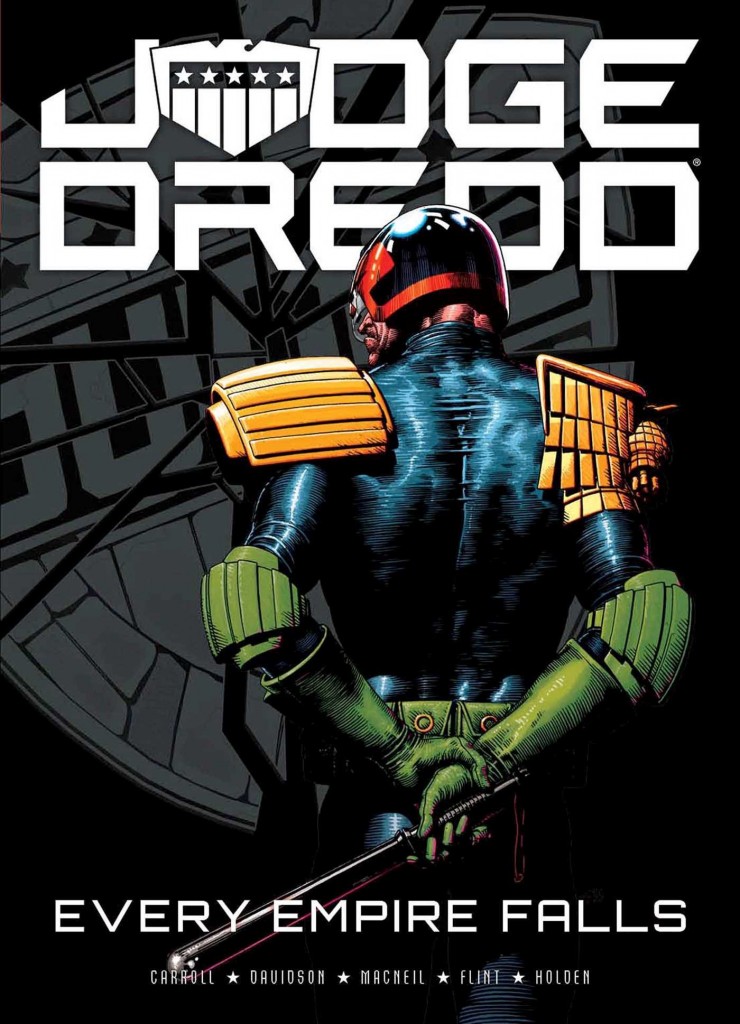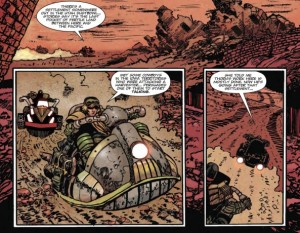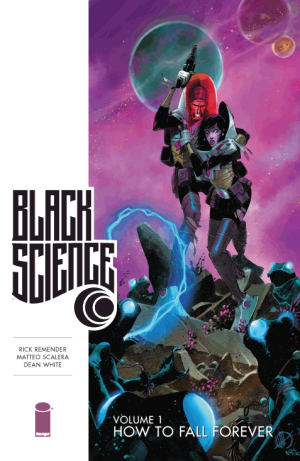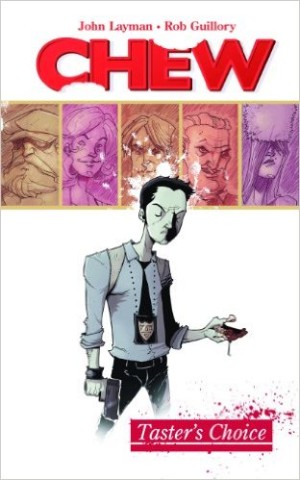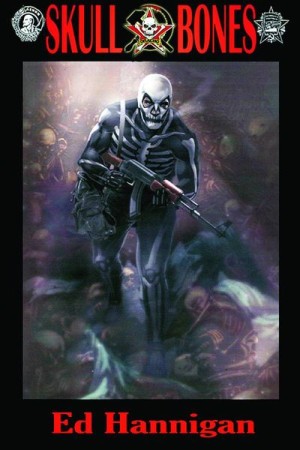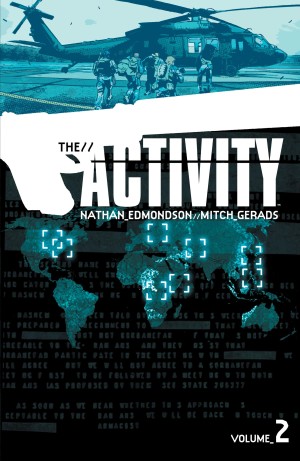Review by Karl Verhoven
Spoiler warning up front: if you’re coming to Every Empire Falls fresh, don’t read writer Michael Carroll’s introduction before the remaining content.
It’s an ominous title, and follows the events of Day of Chaos, which ran sweeping changes through Mega-City One, not least decimating the population and delivering the serious question as to whether the surviving judges could continue to maintain the law with limited resources. “Every empire falls Chief Judge. Maybe this is all we get. Maybe our time is coming to an end”, is a once unthinkable prognosis. Judges have been loaned by other cities, and the opening story features the introduction of Judge Fintan Joyce from Ireland, a recurring character in Carroll’s stories.
That opener is a good indication of what follows, logically constructed and based on events from the past as a thug armed with both Justice Department ordinance and weapons used against Mega-City One poses a serious threat. It works to a clever conclusion and is cleanly illustrated by Paul Davidson. The follow-on has Dredd accompanying Joyce back to Ireland to solve an old mystery that sets in motion the political considerations sparking the remaining material. Not all overseas regimes are keen to aid Mega-City One in its hour of need. Some, in fact, consider their weakness a screw to be tightened. That tale works to an unthinkable conclusion. It isn’t Colin MacNeil’s best work, but his later pages for ‘Reclamation’ are a treat.
From the midpoint the focus takes a wider sweep around previously introduced judges, returning Rico, and the unconventional Koburn alongside Joyce. There’s good news in that artist Henry Flint (sample art) has rediscovered his Dredd mojo, producing some fantastic pages for a Cursed Earth story way better than his Day of Chaos work. There are hints of Dredd’s twin godfathers Mike McMahon and Carlos Ezquerra (who illustrates this book’s surprising finale), but this is Flint’s excellent vision.
Other than John Wagner, Carroll’s rapidly established himself as the best regular Dredd writer. He provides a widescreen approach, logical and surprising plots and he doesn’t just build on the work of Wagner and others, but supplies his own legacy items, with Flint’s story of a psuedo-Native American community an example. On the basis of this and previous work, he deliberately avoids Dredd’s more whimsical elements, and if that’s not home territory for him it’s best left to others, and some artists compensate if you study the backgrounds. The later material was originally serialised as two stories running in different publications simultaneously, but here provided one following another. It’s the correct decision even it does make Carroll appear to be repeating himself.
With good art from P.J. Holden and even better pages from MacNeil, Carroll’s closing plot concentrates on Mega-City One under siege politically, having to ask Texas City for help. With Dredd out of the picture for reasons disclosed in story, the system he believes in looks to be crumbling.
Wagner has carried Dredd for so long, when even acclaimed writers have failed to sustain the essentials of the strip, so there’s always been the fear of what will happen when Wagner calls it a day. Every Empire Falls announces the heir apparent. It’s an epic in traditional Dredd style, keeping us guessing, cranking up the thrills, and throwing in several welcome guest stars who never seem intrusive. It’s not quite hitting the absolute best of Dredd, but it’s the best Dredd graphic novel in a long time.
